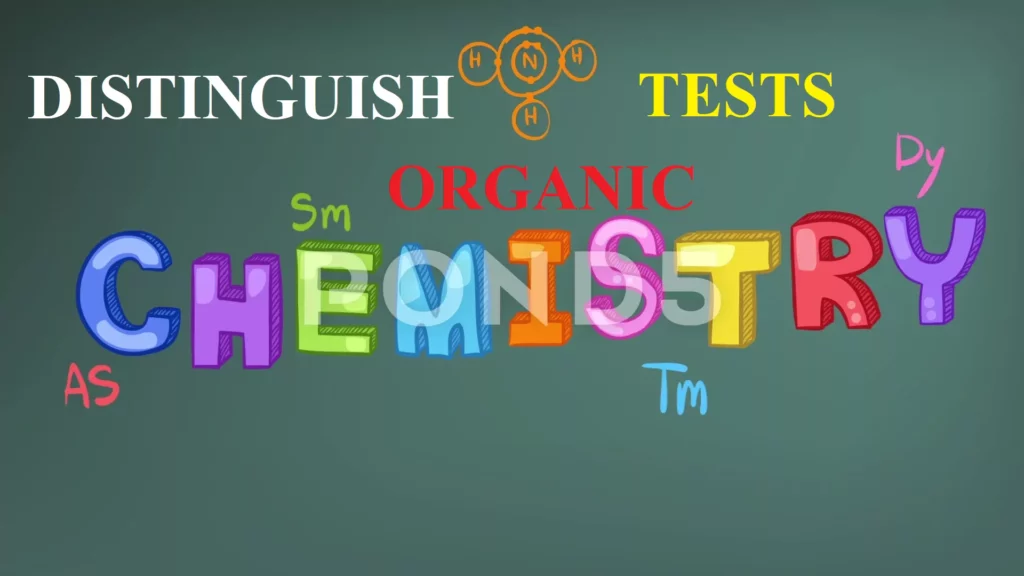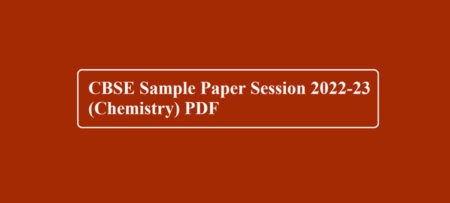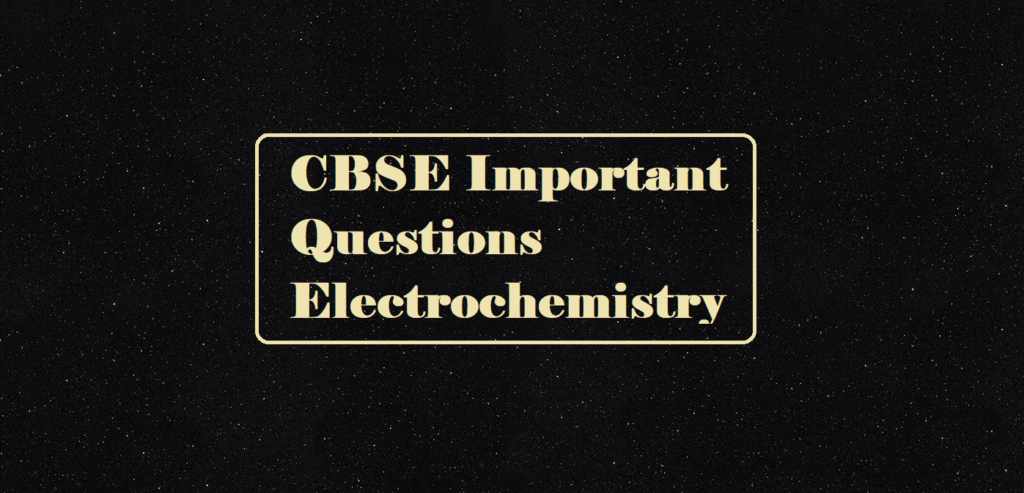Organic Chemistry Distinguish Tests
Distinguish between
1. (C2H5)2NH and (CH3)3NH
i). Add HNO2. (C2H5)2NH will form a yellow oily compound, whereas (CH3)3NH will form salt soluble in water.
(C2H5)2NH + HNO2 → (C2H5)2N−N=O
diethylamine N − nitrosodiethylamine
(Yellow oily liquid)
ii). Alternatively, add Hinsberg’s reagent (C2H5)2NH will form compounds soluble in KOH, whereas (CH3)3NH will not react.

2. C6H5NH2 and C6H5-NH-CH3
i). C6H5NH2 Will give Carbylamine test (primary amine) – in addition with chloroform and KOH, C6H5NH2will give offensive smelling compound.
 3. To distinguish Primary, secondary and tertiary amine:
3. To distinguish Primary, secondary and tertiary amine:
i). Hinsberg test:
ii). Nitrous acid test:

4. Aniline and Ethylamine: On adding benzene diazonium chloride, aniline forms yellow azo dye, whereas ethyl amine does not.
5. Aniline and Benzyl amine: On adding benzene diazonium chloride, aniline forms yellow azo dye, whereas Benzyl amine does not.
 6. Methylamine and Dimethylamine: Carbylamine test Methylamine would give a carbylamine test but dimethylamine does not.
6. Methylamine and Dimethylamine: Carbylamine test Methylamine would give a carbylamine test but dimethylamine does not. 
7. Ethanal and Propanal: Iodoform Test Add I2 and NaOH, Ethanal will give yellow ppt. of iodoform, whereas Propanal will not react.  8. Phenol and Benzoic acid: Add NaHCO3 solution to each of them Phenol will not react whereas Benzoic acid will give brisk effervescence due to carbon dioxide.
8. Phenol and Benzoic acid: Add NaHCO3 solution to each of them Phenol will not react whereas Benzoic acid will give brisk effervescence due to carbon dioxide.
9. Benzaldehyde and Acetophenone: Iodoform Test Add I2 and NaOH, Acetophenone will give yellow ppt. of iodoform, whereas Benzaldehyde will not react.
10. Benzoic acid and ethyl benzoate: Add NaHCO3 solution to each of them ethyl benzoate will not react whereas Benzoic acid will give brisk effervescence due to carbon dioxide.
11. Propanal and Propanone: Iodoform Test: Add I2 and NaOH, Propanone will give yellow ppt. of iodoform, whereas Propanal will not react.
12. Benzophenone and Acetophenone: Iodoform Test Add I2 and NaOH, Acetophenone will give yellow ppt. of iodoform, whereas Benzophenone will not react.
13. Pentan-2-one and Pentan-3-one: Iodoform Test Add I2 and NaOH, Pentan-2-one will give yellow ppt. of iodoform, whereas Pentan-3-one will not react.
14. Propanoyl chloride and Propanoic acid: Add NaHCO3 solution to each of them Propanoyl chloride will not react whereas propanoic acid will give brisk effervescence due to carbon dioxide.
15. Benzaldehyde and Ethanal: Iodoform Test Add I2 and NaOH, Ethanal will give yellow ppt. of iodoform, whereas Benzaldehyde will not react.
16. Propanal and Butan-2-one: Iodoform Test Add I2 and NaOH, Butan-2-one will give yellow ppt. of iodoform, whereas propanal will not react.
17. Benzaldehyde and Benzoic acid: Add NaHCO3 solution to each of them. Benzaldehyde will not react whereas Benzoic acid will give brisk effervescence due to carbon dioxide.
18. Benzoic acid and methyl benzoate: Add NaHCO3 solution to each of them methylbenzoate will not react whereas Benzoic acid will give brisk effervescence due to carbon dioxide.
19. Acetic Acid and formic acid: Add Fehling’s solution. Formic acid will form a brick-red precipitate, whereas Acetic acid will not react.
20. Ethanoic acid and Methanoic acid: Add Tollen’s reagent to each of them. Methanoic acid will form a silver mirror whereas Ethanoic acid will not react with Tollen’s reagent.
21. Ethanol and Phenol: FeCl3 Test: Add neutral FeCl3. Phenol gives violet colour, ethanol does not.
22. Methanol and propan-2-ol: Iodoform Test Add I2 and NaOH, Propan-2-ol will give yellow ppt. of iodoform, whereas Methanol will not react.
23. Phenol and Cyclohexanol: FeCl3 Test Add neutral FeCl3. Phenol gives violet colour, Cyclohexanol does not.
24. Pentan-2-ol and Pentan-3-ol: Iodoform Test: Add I2 and NaOH, Pentan-2-ol will give yellow ppt. of iodoform, whereas Pentan-3-ol will not react.
25. Propanol and 2-methylpropan-2-ol:
26. n-propyl alcohol and isopropyl alcohol: Iodoform Test Add I2 and NaOH, Isopropyl alcohol will give yellow ppt. of iodoform, whereas n-propyl alcohol will not react.
27. Phenol and Benzyl alcohol: FeCl3 Test: Add neutral FeCl3. Phenol gives violet colour, Benzyl alcohol does not.
28. Phenol and 1-Propanol: FeCl3 test: Add neutral FeCl3. Phenol gives violet colour, 1-propanol does not.
29. Ethanol and Diethyl ether: Iodoform Test Add I2 and NaOH, Ethanol will give yellow ppt. of iodoform, whereas Diethyl ether will not react.
30. Chlorobenzene and Benzyl Chloride: AgNO3 Test: Benzyl chloride on reaction with ethanol followed by AgNO3 will give white ppts whereas chlorobenzene does not.
30. Chloroform and Carbon Tetrachloride: Isocyanide Test Add aniline and alc. KOH, chloroform will give a foul smell of Isocyanide whereas carbon tetrachloride does not.
Summary of The various Chemical Tests

Organic Chemistry Distinguish Tests












